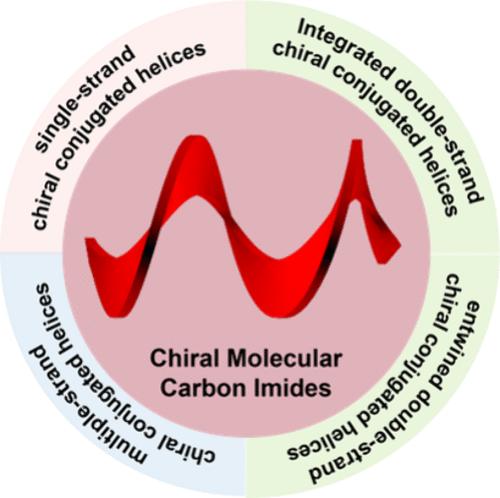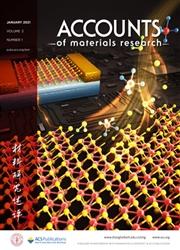Chiral Molecular Carbon Imides: Shining Light on Chiral Optoelectronics
IF 14
Q1 CHEMISTRY, MULTIDISCIPLINARY
引用次数: 0
Abstract
Chiral molecular carbon imides (CMCIs) represent a kind of chiral π-conjugated molecules that are typically designed and synthesized by introducing helical chirality. This approach creates a stereogenic axis, rather than a traditional chiral center or chiral axis with saturated bonds, resulting in chiral conjugated helices (CCHs). CMCIs have garnered significant attention due to their flexible synthesis (annulative π-extension strategies), tailor-made structures (chiral polycyclic π-conjugated frameworks), and diverse properties (optical, electronic, magnetic, and biochemical characteristics related to chirality). Furthermore, CMCI systems exhibit unique chiroptical properties, including circular dichroism (CD) and circularly polarized luminescence (CPL), which have elevated them as emerging stars among chiral organic functional molecules. Benefiting from their large conjugation planes and excellent electron-withdrawing ability, CMCIs often display outstanding electron mobility, high electron affinity, and strong light absorption or emission capabilities, making them valuable in various organic semiconductor applications. Their unique chiroptical properties and excellent semiconducting abilities position CMCIs as key players in the emerging field of chiral optoelectronics. Additionally, the appropriate packing modes and efficient charge transfer in solid-state CCHs provide excellent platforms for applications in chiral-induced spin selectivity (CISS) and topological quantum properties.

手性分子碳酰亚胺:手性光电子学的闪耀之光
手性分子碳亚胺(CMCIs)是一类典型的通过引入螺旋手性来设计和合成的手性π共轭分子。这种方法产生了一个立体轴,而不是传统的手性中心或具有饱和键的手性轴,从而产生了手性共轭螺旋(CCHs)。CMCIs由于其灵活的合成(环性π扩展策略)、定制的结构(手性多环π共轭框架)和不同的性质(与手性相关的光学、电子、磁性和生化特性)而受到广泛关注。此外,CMCI系统具有独特的手性特性,包括圆二色性(CD)和圆偏振发光(CPL),使其成为手性有机功能分子中的新兴明星。由于其大的共轭平面和优异的吸电子能力,cmcs通常表现出出色的电子迁移率,高电子亲和性和强光吸收或发射能力,使其在各种有机半导体应用中具有重要价值。其独特的手性特性和优异的半导体性能使cmc成为手性光电子学新兴领域的关键参与者。此外,固体CCHs中合适的填充模式和高效的电荷转移为手性诱导自旋选择性(CISS)和拓扑量子特性的应用提供了良好的平台。
本文章由计算机程序翻译,如有差异,请以英文原文为准。
求助全文
约1分钟内获得全文
求助全文

 求助内容:
求助内容: 应助结果提醒方式:
应助结果提醒方式:


